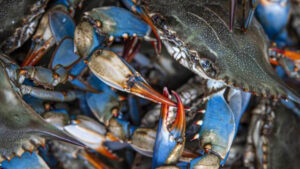JULY 25, 2023

Shellfish Batteries
Maryland is already famous for its crabs — but researchers at the University of Maryland are looking to give that distinction an entirely different meaning.
A team of scientists at the school’s Center for Materials Innovation found that crustaceans like crabs and lobsters contain a chemical in their shells called chitin, which can be used to power batteries when combined with zinc.
Crustacean shells packed with this chemical are typically thrown out en masse by restaurants that have no other use for them. But researchers believe this waste could serve as a powerful resource in the search for more sustainable batteries.
Lithium-ion batteries, the common kind found in most of our cellphones and laptops, can take hundreds of thousands of years to break down after they’re used up — not to mention the devastating environmental impact lithium extraction has on our planet.
But these shellfish batteries are biodegradable and can decompose in soil after just five months, leaving behind zinc, which can be recycled.
The University of Maryland’s study also found that chitin-zinc batteries were 99.7% efficient after over 400 hours of use, as reported by The Guardian, and that these batteries could likely be produced cheaply at scale.
As the world transitions away from dirty energy sources, like methane gas and coal, it’ll need tons of cheap and environmentally friendly batteries. Crustaceans could provide a solution, especially in hopes of lessening our reliance on lithium-ion batteries.
Speaking with The Guardian, Graham Newton, a professor of materials chemistry at the University of Nottingham who studies sustainable battery technology, was cautiously optimistic about the discovery.
“When you develop new materials for battery technologies there tends to be a significant gap between promising lab results and a demonstrable and scalable technology,” Newton, who is not affiliated with the Maryland study, told the outlet.
Courtesy/Source: The Cool Down










































































































